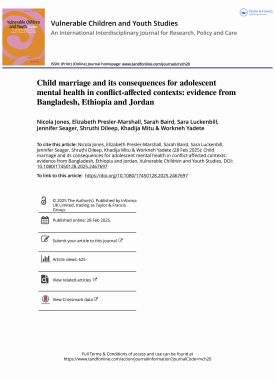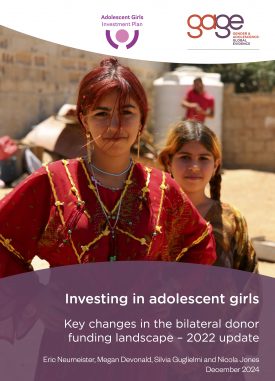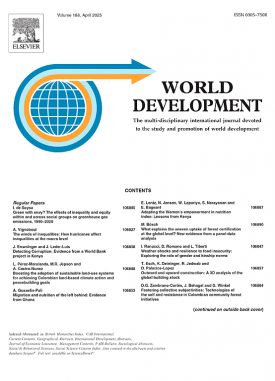There are more refugees in the world today than at any other time in history. In 2018 there were over 25.4 million refugees around the world, 52% of whom were under 18 (UNHCR, 2018). Internally displaced persons (IDPs) are even more numerous, estimated to total approximately 40 million globally, 17 million of whom are children under the age of 18 (UNDESA, 2017).
While adolescence (10–19 years) is acknowledged to be a critical window of opportunity to accelerate progress against poverty, inequity and discrimination (Patton et al., 2012), it can be particularly fraught for young people displaced through forced migration. Evidence suggests that young people and adolescent girls in particular are especially vulnerable to the multiple deprivations and abuses that occur in conflict-affected settings (UNESCO, 2019).
If we are to deliver on the 2030 Agenda for Sustainable Development and the commitment to prioritise the most excluded, understanding adolescent girls’ and boys’ experiences in refugee and IDP communities is critical. Only with a better evidence base will programme designers and implementers be able to adequately tailor programmes and services to ensure no adolescent is left behind.
The policy note summarises our research findings across refugee communities in Gaza, Jordan and Rwanda, and with internally displaced adolescents in Ethiopia in order to contribute to the broader evidence base essential for advancing programming.
Suggested citation
Jones, N., Devonald, M. and Guglielmi, S. (2019) ‘Leave no adolescent behind: the gender- and age-specific vulnerabilities of adolescent refugees and IDPs.’ Policy Note. London: Gender and Adolescence: Global Evidence. (https://www.gage.odi.org/publication/leave-no-adolescent-behind-the-gender-and-age-specific-vulnerabilities-of-adolescent-refugees-and-idps/)


